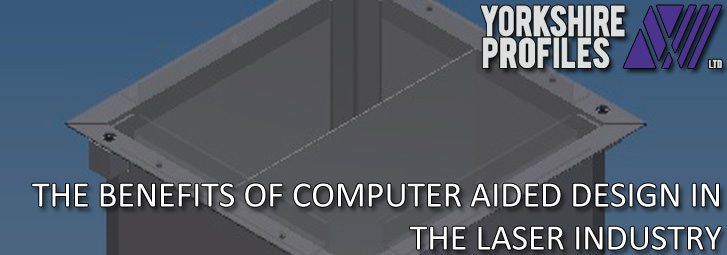
The manufacturing industry is an extensive one that has a long history of different tools used for various processes. Today, we have Computer Aided Design (better known as CAD) to help us do a variety of jobs that were once tough to do or simply impossible.
It’s now rare to have a product that doesn’t take advantage of CAD software. The reason for this is how superior it is when compared to the more manual alternatives. This blog will look at all of the reasons why CAD is a must-have to be successful in the laser industry.
Better Productivity
When working with a number of different materials for clients, a high level of productivity is essential. It has a large effect on how fast jobs can be completed, which is essential for those that have strict deadlines and fast turnarounds to meet.
CAD software provides a clear way of viewing what the final product will look like, including the sub-assemblies and different constituent parts. If the particular item will be used as a piece of a machine, there’s the ability to run a program which shows how it would work with the apparatus.
Machines fitted with CAD/CAM (Computer Aided Manufacture) software can also work on a 24/7 basis without the need for human interaction. If there’s a significant workload in a short period of time, these machines can easily deal with these jobs efficiently and comprehensively. By using a stillage (a wooden rack or pallet for holding stored goods off the floor) it’s possible to complete numerous jobs in the shortest amount of time.
Superior Quality
When using a laser cutter instead of a saw or specialized clamp, one of the biggest things to be impacted is the quality. As alternatives need to be controlled by a human as opposed to an automated system, there’s a bigger margin for error that can prove costly to rectify.
CAD/CAM has a superior level of accuracy, drastically reducing the chance of accidental damage. A great advantage is how able to provide a full engineering analysis of the proposed design, and also analyse the feasibility. Investigations can be carried out on areas that need to be adapted in order to achieve a greater cut.
Waste Conscious
In the manufacturing industry, one of the biggest problems is wastage. Whether it’s because too much of a material is used or lack of efficiency, all too often material is wasted, and therefore money. CAD completely avoids this, working economically and maintaining material that can be used again.
Nesting is one process that minimises raw material waste, by laying out the cutting pattern. It’s commonly used on sheet metal when processing a number of different parts. Even more impressive is the ability to take into account material characteristics, including defects, quality levels and direction constraints.
Quality Design
After the design process of a particular item, the next important thing to consider is the drawing. This has some of the most important information included – such as dimensions, special requirements and warnings. CAD can make clear, standardised drawings that can be easily understood.
These details are needed throughout all of the manufacturing stage, so having something with less drawing errors, appropriate design and good legibility is invaluable.
Easy Documentation
Creating the official documentation can be a stressful and time consuming process. It requires all the details required by both the manufacturer and client, including geometries, dimensions, subassemblies, components, material specifications and more.
CAD is able to create this document as you input details for the design. With only a few basic inputs there can be an official page that simply needs to be sent to the client.
Superior Database
Having a sufficient database is important for any manufacturing process. Most items will go through a multitude of different designs before the final one is chosen and created. Thankfully some CAD packages have a database that will log every change, no matter how big or small.
In the matter of seconds an old design can be brought back up and adapted to a client’s needs. Being able to deal with a customers demands in such an easy way is an invaluable benefit that every business should be able to do.
Production Planning
Thankfully, CAD can be used in conjunction with production planning software. This will create a detailed plan that will allow a material to be manufactured to a superior quality in the shortest space of time. This is conducted by using the particular machine to the best of its abilities.
Identical Mass Production
Often companies will turn to the laser cutting industry for branding reasons, for example, wanting logos on various collateral. This can range from a signage to a thousand engraved pens that will be given out. To do this by hand would be practically impossible, especially if trying to achieve consistent quality.
CAD/CAM doesn’t have this problem. It doesn’t matter if it’s the first or the thousandth item, they will all look the same. A number of people believe that laser cutting can’t be done on smaller object. This system will recognise how much manufacturing space there is and change the laser beam size appropriately. There are very few systems that can achieve an intricate design like this without sacrificing the quality.
User Friendly
A number of systems that are used within the manufacturing industry are complicated and actually require courses for someone to be qualified. The majority of CAD programs are user friendly and easy to use, with step-by-step training.
Yorkshire Profiles and CAD
CAD software is an incremental part of the laser cutting process.
For more information about CAD or any other processes we do, get in contact with Yorkshire Profiles today on 01904 737095. You can also join the conversation to see the latest on industry news on Twitter: @YorksProfiles

